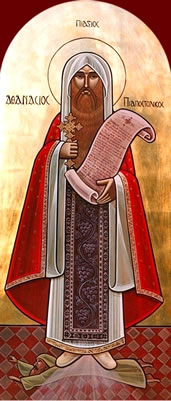The Council of Caesarea (AD 334)
| Date | 334 |
| Location | Caesarea (Palestine) |
| Chaired by | Eusebius of Caesarea (?); Dalmatius, the imperial Censor |
| Purpose | To examine misconduct charges against Athanasius |
As part of the long running animosity the Melitians felt toward Athanasius, the former wrote to Constantine in 334 accusing Athanasius of violent acts–breaking a communion chalice, and even the murder of bishop Arsenius of Hypsele–and requesting justice. The emperor complied and directed his half-brother Dalmatius, who was stationed in Antioch and administering the East with the title of Censor, to hear the case. Dalmatius set the hearing at Caesarea in Palestine, calling both bishops, the aggrieved Melitians, and Athanasius to the hearing. We learn this from Athanasius himself (Defense against the Arians/Apol. secunda, 65). A confirmation that the invitations were sent comes from a famous papyrus letter of a Melitian monk who was making arrangement to leave for Caesarea (see our Melitian document 23).
The Arian bishops began gathering and probably intended that the sympathetic host bishop, Eusebius Pamphili would chair the meeting as a council. However, it appears that the council never did take place. It was cancelled after Athanasius by the emperor after he received affidavits that Arsenius had been discovered in hiding but in good health, showing the trumped-up nature of the charges (Defense against the Arians, 65-67). The following year, however, the emperor again was pressured to bring Athanasius before a hearing, this time at a council in Tyre. To provide the context for that council, we have decided to keep the never-held council of 335 in our list of church councils.
Bibliography
T.D. Barnes, Athanasius and Constantius (Cambridge MA: Harvard University Press, 1993), pp. 21-22.
Created by PSAM
Last updated: 2-10-2025 by JSW
No Responses yet
